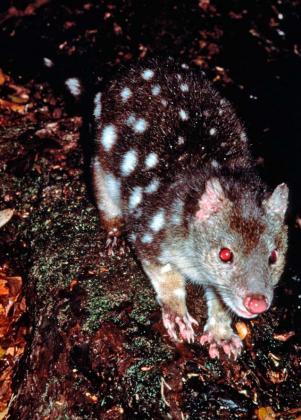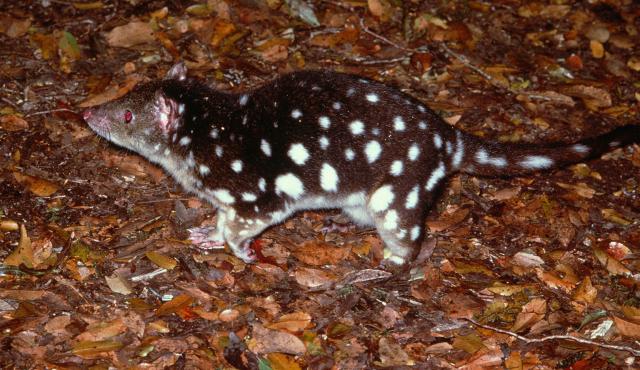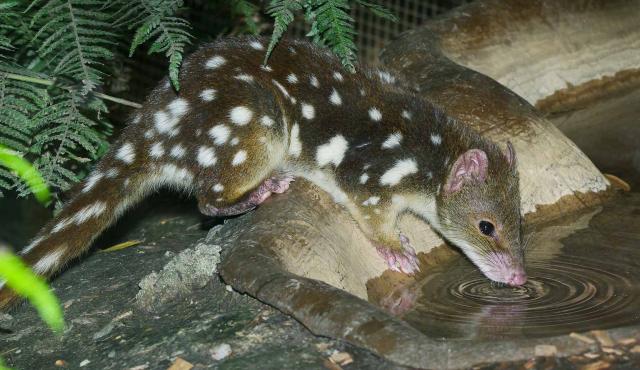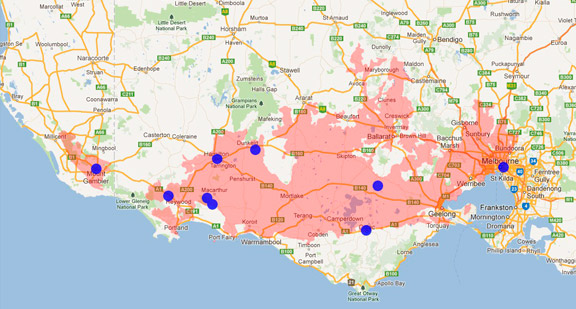A range of teacher professional learning programs will be developed to accompany the Biodiversity of the Western Volcanic Plains online outreach...




Spot-tailed Quoll
Dasyurus maculatus
Usually hunts alone at night, sometimes during the day. Good climber. Uses tree hollows for shelter and fallen trees as runways. Breeds in late autumn to early winter so that young become independent in early summer when food is most abundant. Up to six young per litter, in grass-lined underground den. Introduced predators including foxes and cats eat the quoll's food supply, as well as prey upon the quolls directly.
| Details | Description |
| Type | Mammal |
| Group | Marsupial |
| Other Common Names | Tiger Quoll, Spotted-tailed Quoll, Native Cat |
| Identifying Characteristics | |
| Distinctive Markings | White spots on tail. |
| Diet | Carnivore. Eats medium-sized birds, possums, bandicoots, mice and insects. |
| Habitat | Lives in dry forests, sclerophyll forests and coastal scrub. |
| Native Status | Native to Australia |
| Sounds | Deep hissing and screeches. |
| Taxonomy | |
| Phylum | Chordata |
| Class | Mammalia |
| Order | Dasyuromorphia |
| Family | Dasyuridae |
| Genus | dasyurus |
| Species | Maculatus |

Distribution maps indicate current and historic locations where species have been sighted.
Source: Atlas of Living Australia
| Conservation Status | |
| DEPI Advisory List | Endangered |
| FFG Act | Listed as threatened |
| EPBC Act | Endangered |
| FFG Action Statement |
The conservation status of species is listed within Victoria and Australia.
The Department of Environment and Primary Industry (DEPI) Advisory List consists of non-statutory advisory lists of rare or threatened flora and fauna within Victoria.
The Flora and Fauna Guarantee Act 1988 (FFG Act) lists threatened species in Victoria. Under the Act, an Action Statement is produced for each listed species.
The Environment Protection and Biodiversity Conservation Act 1999 (EPBC Act) is the Australian Government’s key piece of environmental legislation, listing nationally threatened native species and ecological communities.



